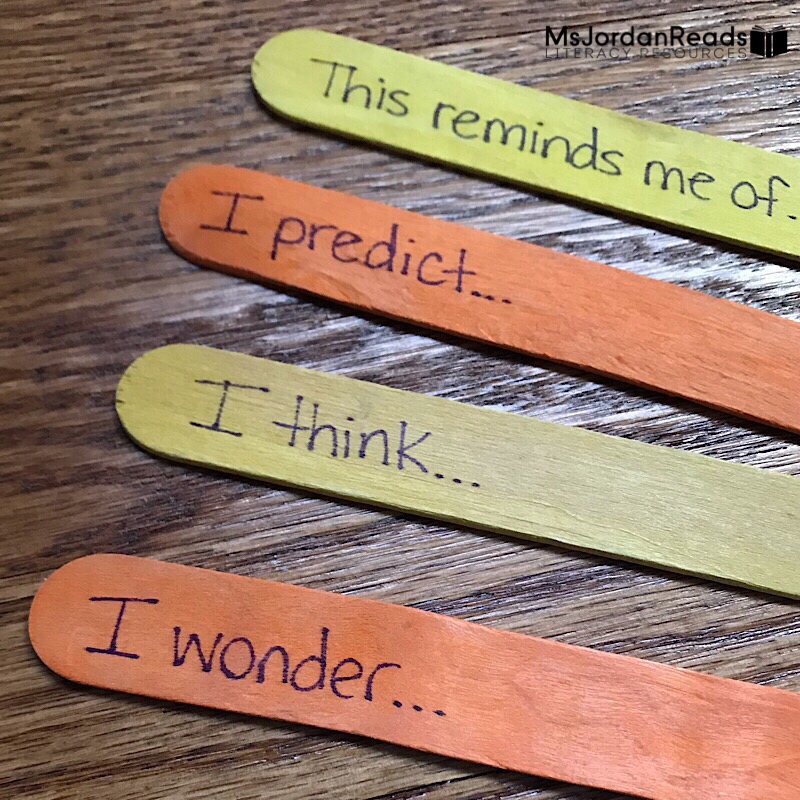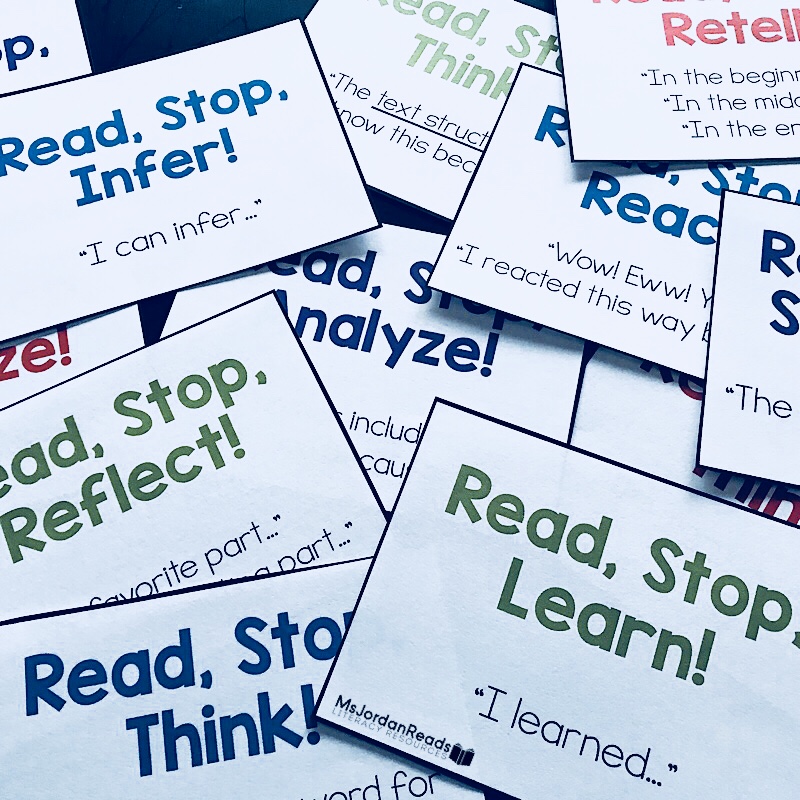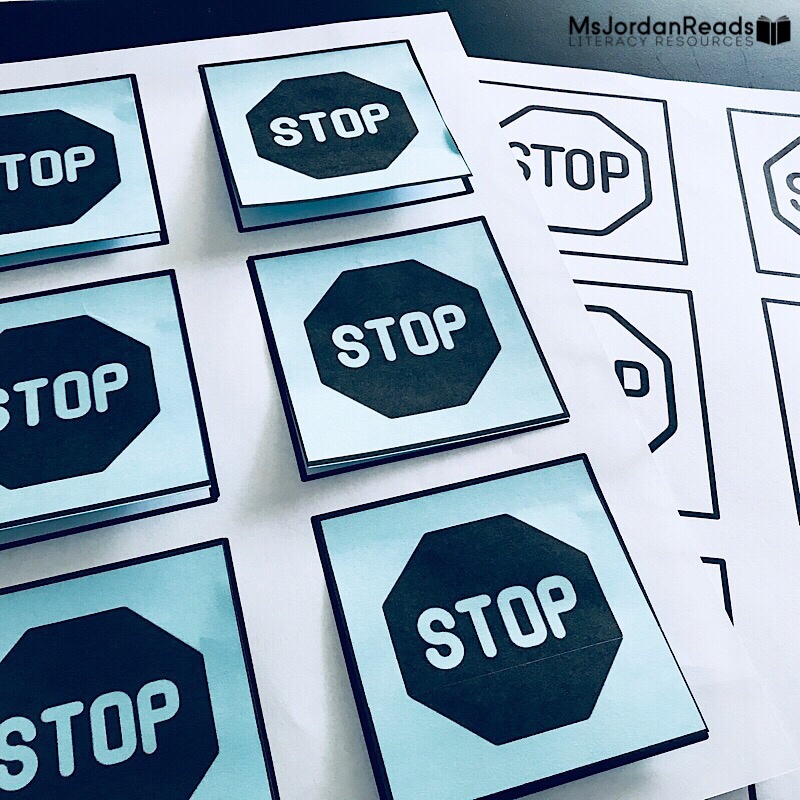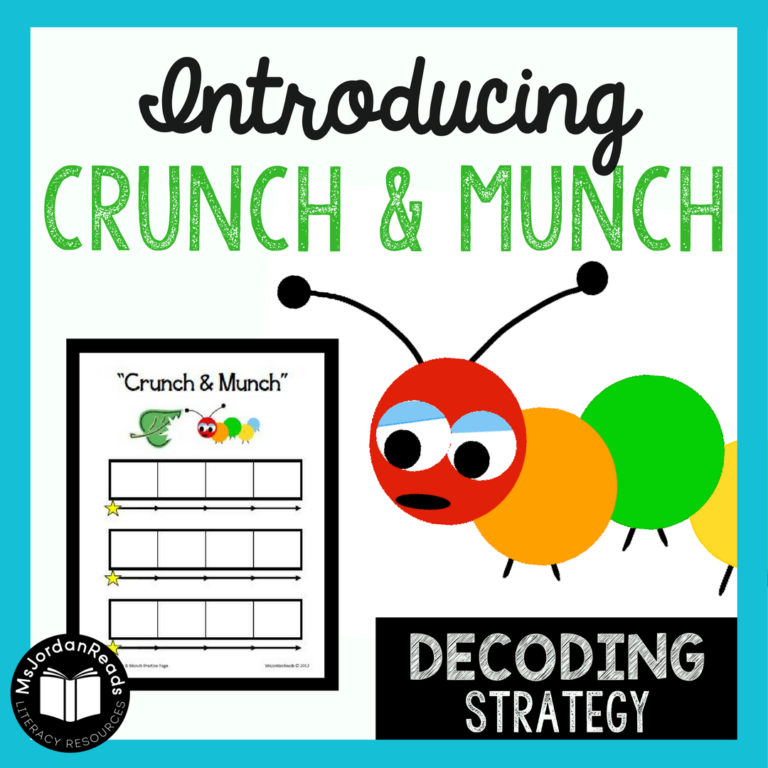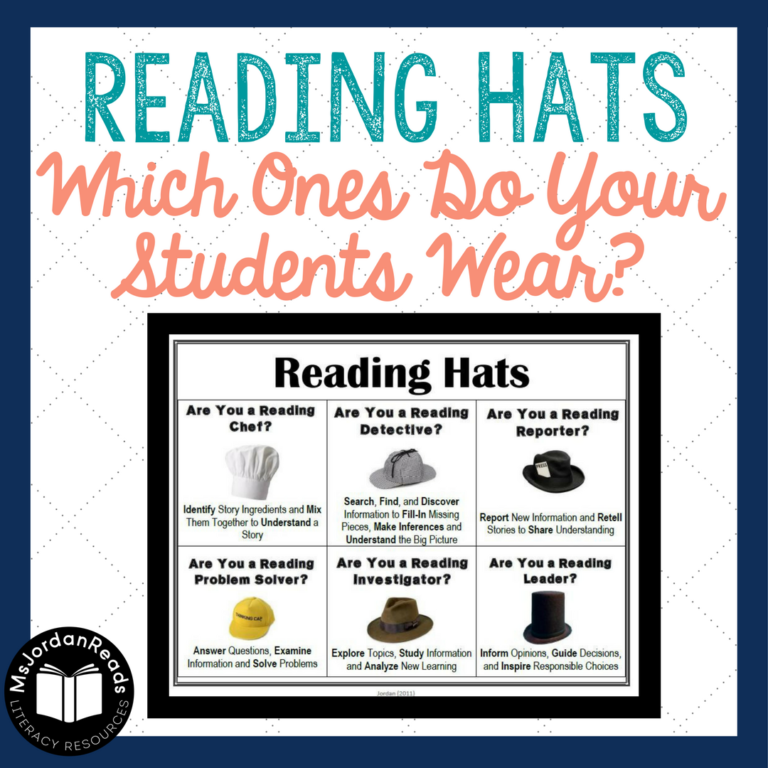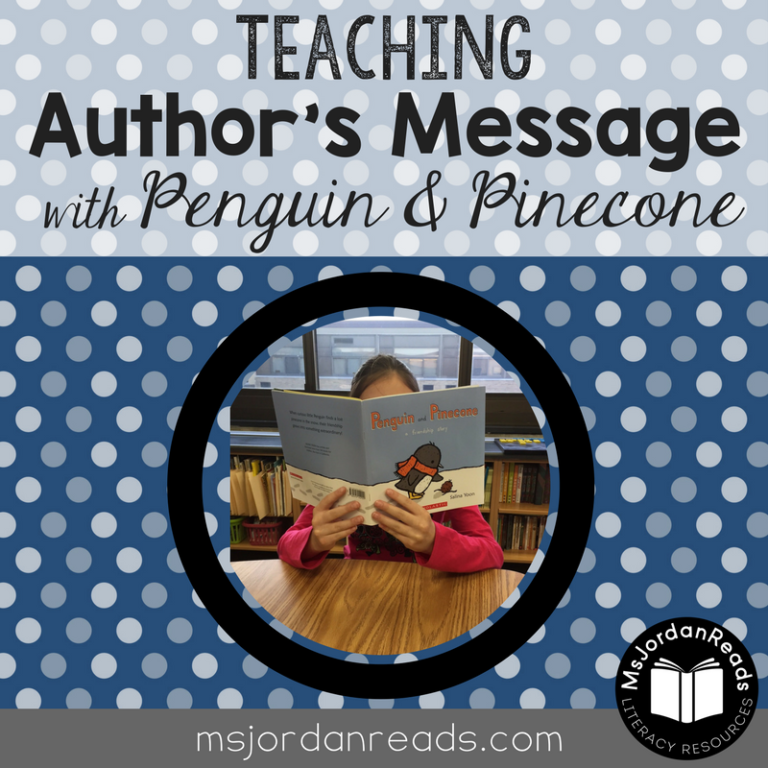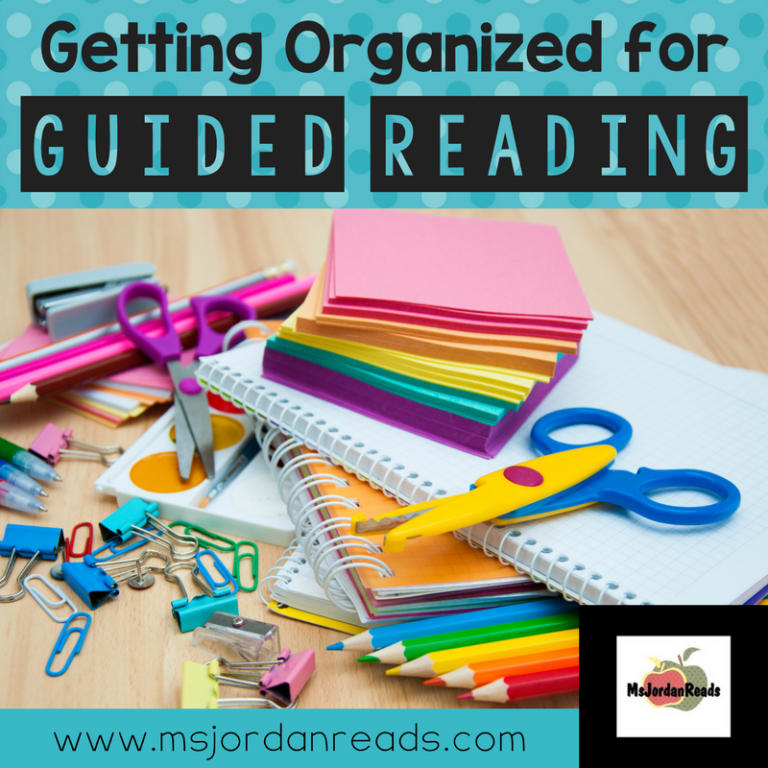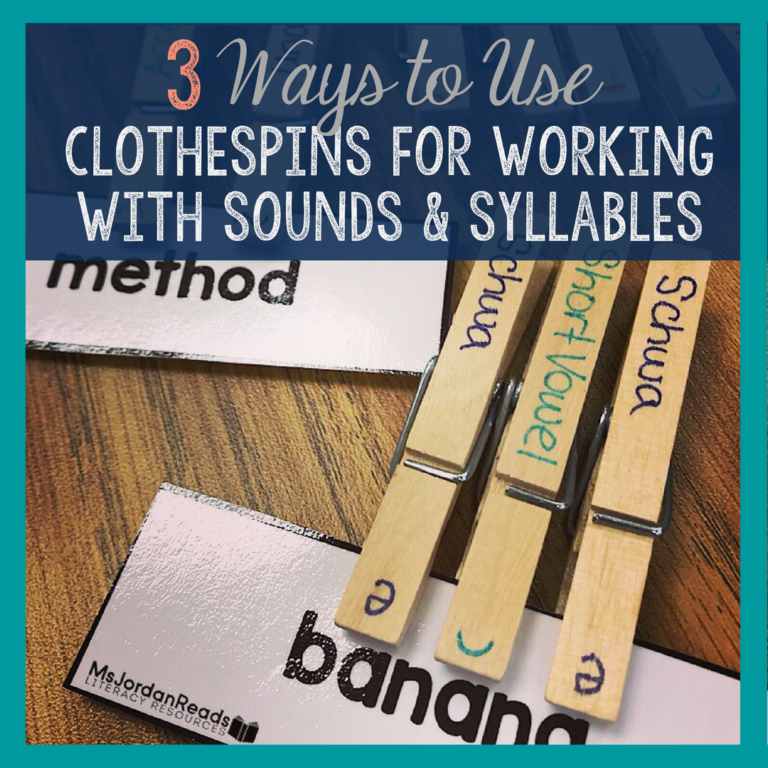Read, Stop, Think! – A Strategy for Active Reading
Are your students active readers? Active reading is the process of thinking and reflecting about a text while you are reading. For many students, it’s a natural process, but for most students, it needs to be taught explicitly.
Struggling readers have an especially hard time with active reading. Often students who struggle with decoding have difficulty with active reading, as their mental energy is dedicated to recognizing word patterns and figuring out what each word says. Once their focus shifts to making meaning, students can learn to apply various comprehension skills as they read. For students who struggle with comprehension, they will often read through an entire text without monitoring or fixing up their comprehension. They may not understand what they are reading or they may not know HOW to apply the different comprehension skills to support their understanding of the text. Active reading strategies that encourage students to break apart the text and focus on specific comprehension skills are really beneficial for these students.
Read… Stop… Think!
“Read, Stop, Think!” is an active reading strategy I use with my small reading groups. It’s the perfect intervention for helping students stop and think throughout a text. With this strategy, students will READ small chunks of text, STOP to monitor their understanding, and then THINK within, about, or beyond the text. Many comprehension skills can be applied at these stopping points, and you can do this with both fiction and non-fiction texts.
Chunking the Text While You “READ”
Research shows that “chunking” a text can improve comprehension. Using stopping points, students can break up a text into smaller easy-to-manage sections or “chunks” of text, instead of reading a text all the way through. This is especially beneficial for struggling readers!
By chunking the text, students are better able to monitor their comprehension and process the content. It also provides opportunities for rereading the section over again if it doesn’t make sense, or if decoding got in the way of their comprehension.
Reminders to “STOP”
To help students break texts into chunks, have them use sticky note stop signs. You can create your own (just write the word “STOP!” or draw a stop sign on a sticky note) or grab my free printable template at the bottom of this post. These sticky notes act as a visual reminder for students to actually stop as they reach the end of each chunk. It will slow down your speedy readers and will provide opportunities for ALL students to process, think, reflect, and discuss.
As a reading specialist working with struggling readers, I typically use these stopping points to check for understanding and for remediation during small reading groups. I often encourage students to reread challenging sections if they had meaning-changing miscues or didn’t seem to grasp the content.
When introducing and modeling this part of the “Read, Stop, Think!” strategy, I would recommend providing the exact stopping points and telling students where to place their stop signs. Unless there are easy-to-chunk chapters or sections, it may be difficult for students to decide where to stop. Natural stopping points may not be obvious to students, especially younger readers. The goal is for students to eventually chunk texts on their own, deciding where to place the stop signs independently. This may involve further modeling and think-alouds with new books as students become more proficient with this strategy.
What to “THINK” About
So what do ask your students to THINK about at each of the stopping points? Anything connected to the text! In the beginning, I often guide this process and start with comprehension skills they are already familiar with (making predictions, asking questions, etc.). Depending on the level of students, you can focus on one comprehension skill at a time or you can provide them with a “menu” of comprehension skills to choose from. Once the students are familiar and independent with “Read, Stop, Think!,” I use this strategy to teach brand-new higher-level thinking skills like analyzing characters, identifying key words, synthesizing, and evaluating.
When I teach this, I often create an anchor chart of the different comprehension skills the students can choose from. We record all the ones we’ve mastered and then add to it throughout the year!
Possible Comprehension Skills:
• Asking Questions
• Making Connections
• Making Predictions
• Recalling Text Details
• Making Visualizations
• Making Inferences
• Analyzing Schema (new learning)
• Summarizing
• Retelling (beginning/middle/end)
• Reacting to Story Events/Information
• Reflecting (favorite/interesting part)
• Analyzing Author Purpose
• Identifying Main Idea
• Identifying Key Words
• Identifying Text Structure
• Analyzing Personal Purpose
“Read, Stop, Think!” Tools & Tricks
Below are some tools and tricks that may be helpful when getting started with this strategy:
Integrating with Thinking Tracks
Not sure how to hold students accountable for their thinking at each of the stopping points? “Read, Stop, Think!” goes hand-in-hand with “thinking tracks,” which is another active reading strategy. I typically have my students record their thinking about the text using thinking tracks. Basically, it helps students code their thinking and actively engage with the text using multiple comprehension skills while they read. (Check out my blog post about thinking tracks!)
Prompting Thinking
Some students have a difficult time applying comprehension skills at the different stopping points. They may not know where to start or even what to think about. Prompting tools, such as popsicle “think sticks” or comprehension prompt cards, can help students who are having difficulty.
The idea is that students pick a stick or a card and share their thinking for that specific skill. I like to do this in small groups or have students work in partners. The prompt sticks/cards should include questions or sentence stems to help get students started as they share their thinking. For example, students may pick a stick that says “I wonder…” and will have to share a question they are thinking at that stopping point, or they may pick a stick that says “This reminds me of…” and they will have to share a connection.
Ready-to-Print “Read, Stop, Think!” Cards
Are you looking try out “Read, Stop, Think!” today and need ready-to-print materials? Check out the prompt cards from my shop. You can easily make your own, but this will save you time and will provide you with some recording sheets!
These student prompt cards are perfect for reinforcing active reading comprehension skills in small groups, partners, or during independent reading time. Each prompt card provides a sentence starter for students to share their thinking about the text at different stopping points throughout the text. Students can share their active reading thinking aloud or can record their thinking on the provided recording sheets. Keep the cards on a binder ring or in a photo box. (You can even make a class set for students to use in partners!)
Professional Resources to Support Active Reading
Below are two books (affiliate links) that I own and highly recommend for promoting active reading in the classroom. Hoyt’s book includes multiple strategies that go hand-in-hand with “Read, Stop, Think!” and Harvey & Goudvis share a ton of ideas for active reading, especially the active reading thinking tracks which I use with my students throughout the year!
- Strategies That Work (Harvey & Goudvis)
- Revisit, Reflect, Retell (Hoyt)
Printable Post-It Note Stop Signs (FREE)
Download these FREE post-it note reading stop signs to encourage students to chunk texts and create stopping points. This resource will help students to read, stop, and think in order to organize text information, check for understanding, and share their active reading comprehension.
Teacher Tip — If your post-its lose their stickiness, buy reusable glue sticks and add a strip of stickiness back on! 🙂
(Download this FREE resource by clicking here or completing the form below!)
*This post contains affiliate links. Click HERE to learn what that means!

